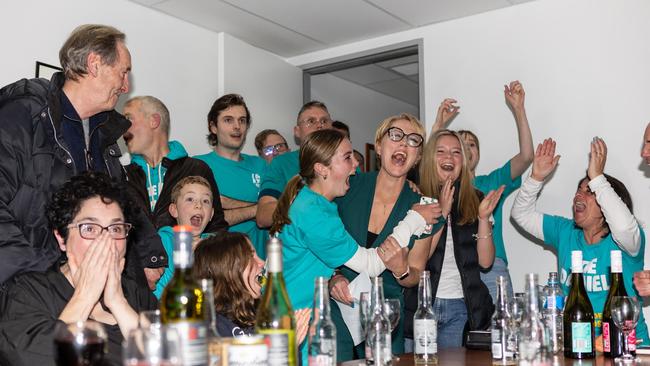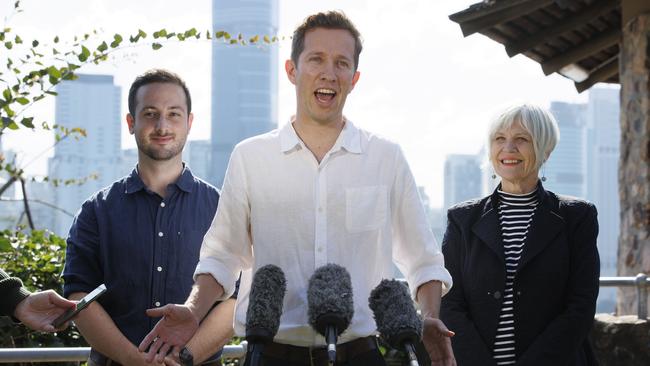Major party preferences empowered the teals and Greens
No so-called independents received majority support in their electorates and most won on the back of Labor and Greens voters.

Primarily because Labor has always had a rule that any parliamentarian who crosses the floor is automatically expelled from the party, a Labor government invariably is bound to maintain its majority for a full term. Unless deaths or illnesses lead to by-elections in marginal or relatively marginal seats. An unlikely occurrence – but a possibility of the remote kind.
The fact Labor will control the House of Representatives for at least the next three years means the (so-called) teal independents and the Greens will have minimal influence in the chamber. The same applies to the independents who were re-elected on May 21 – Helen Haines, Rebekha Sharkie, Zali Steggall and Andrew Wilkie along with Bob Katter of Katter’s Australian Party.
The teal independents went to the election with fashionable promises with respect to cuts in carbon dioxide emissions, unsupported by specific policies as to how these commitments could be achieved in the time indicated. For example, the promise to reduce net emissions by 50 or 60 per cent by 2030.
Greens leader Adam Bandt committed his party to reduce net emissions by 75 per cent by 2030 – without indicating what this would cost or how it would be achieved. Meanwhile Greens’ senator Sarah Hanson-Young told an unquestioning Virginia Trioli on ABC Radio Melbourne on May 10 that under the Greens a zero net emissions target of 100 per cent could be reached by 2030. Really.
Bandt and his three colleagues in the House of Representatives (all newly elected to represent Brisbane electorates) will have little influence in the lower house. But the Greens with a likely 12 senators will be close to a balance of power in the upper house if Liberals and Nationals senators oppose government legislation.

Both the teal independents and the Greens get a soft run in the media – particularly on the ABC and in Nine newspapers and Guardian Australia – so it is important to examine their claims.
In The Australian Financial Review on May 25, former ABC reporter Zoe Daniel (the newly elected independent for the affluent seat of Goldstein in Melbourne) wrote: “We listened while our communities told us what was driving them away from the major parties.” She added: “Discussion not division; evidence not excess; these are our secrets.”
This is part of the independents’ claim to represent their communities. Cathy McGowan, who as an independent defeated sitting Liberal Party member Sophie Mirabella to become the member for Indi in rural Victoria in 2013, was the subject of a friendly profile on ABC TV’s Australian Story on May 16. She described the independents as a “community movement”. However, the votes achieved by the teal independents on May 21 indicate that their claim to represent their communities needs to be qualified.
At the election, Daniel scored 34.7 per cent of the primary vote defeating Liberal Tim Wilson, who scored 40.6 per cent. Yet she claims to speak for the Goldstein community. In Curtin, Kate Chaney achieved 30 per cent of the primary vote. In North Sydney, Kylea Tink’s primary vote was 25.7 per cent. In Mackellar, Sophie Scamps scored 38.5 per cent. In Wentworth, Allegra Spender made it to 36.5 per cent. The only successful teal independent to win over 40 per cent of the primary vote was Monique Ryan in Kooyong. She achieved 41 per cent compared with the Liberal Party’s Josh Frydenberg on 43 per cent.
The message is that no teal independent received majority support in their electorates and most were elected on the preferences of Labor and Greens voters. It was much the same with McGowan, who received 31.2 per cent of the primary vote when she defeated Mirabella in 2013.
Once independents make it to the parliament they are hard to remove since they enjoy the facilities of sitting members. The point is, so far at least, no independent has entered the lower house on the back of an absolute majority of votes.
I have never understood why the Liberal Party preferences the Greens over Labor in metropolitan seats. Take this year. The talented Terri Butler, a shadow minister and member of Labor’s right-wing faction, lost Griffith, formerly held by Kevin Rudd, in suburban Brisbane. Butler scored 29 per cent of the primary vote. She was defeated by the Greens’ Max Chandler-Mather, who received 34.6 per cent. In other words, Chandler-Mather made it to parliament on Liberal preferences; Liberal National Party candidate Olivia Roberts had a primary vote of 30.9 per cent.
Labor nearly suffered a similar fate in the seat of Macnamara – where Josh Burns narrowly succeeded despite the Liberals preferencing the Greens. Burns is a member of the Labor right and a staunch supporter of Israel’s right to exist within secure borders. The Greens are no friends of Israel. But the Liberal Party is.
It’s true that Labor preferences the Greens over Coalition candidates. Sure, Labor is closer to the Greens in policy terms than are the Liberal or National parties. Nevertheless, it’s not clear why Labor saw value in making it possible for the Greens to win the seats of Brisbane and Ryan (also in Brisbane) by preferencing their candidates over the Liberals.
The unintended consequence of Labor preferencing the Greens over the Liberals in marginal seats will be to make the Greens a more formidable force when they attempt to win Labor seats at the next election.
Australia’s system of preferential voting is around a century old and is unlikely to be removed. It benefits different parties and individuals at different times. Right now, it’s important to know that most of the independents who succeeded in 2022 did so with the support of Labor and/or the Greens. And most of the Greens who succeeded did so with the support of the Liberals.
Gerard Henderson is executive director of the Sydney Institute. His Media Watch Dog blog can be found at thseaustralian.com.au.




The important political news of the week is that Anthony Albanese has led Labor to a majority in the House of Representatives. A narrow majority of 77 out of 151 seats, but a majority nevertheless. It’s equivalent to the result attained by the Coalition in 2019 and one better than its margin in 2016.